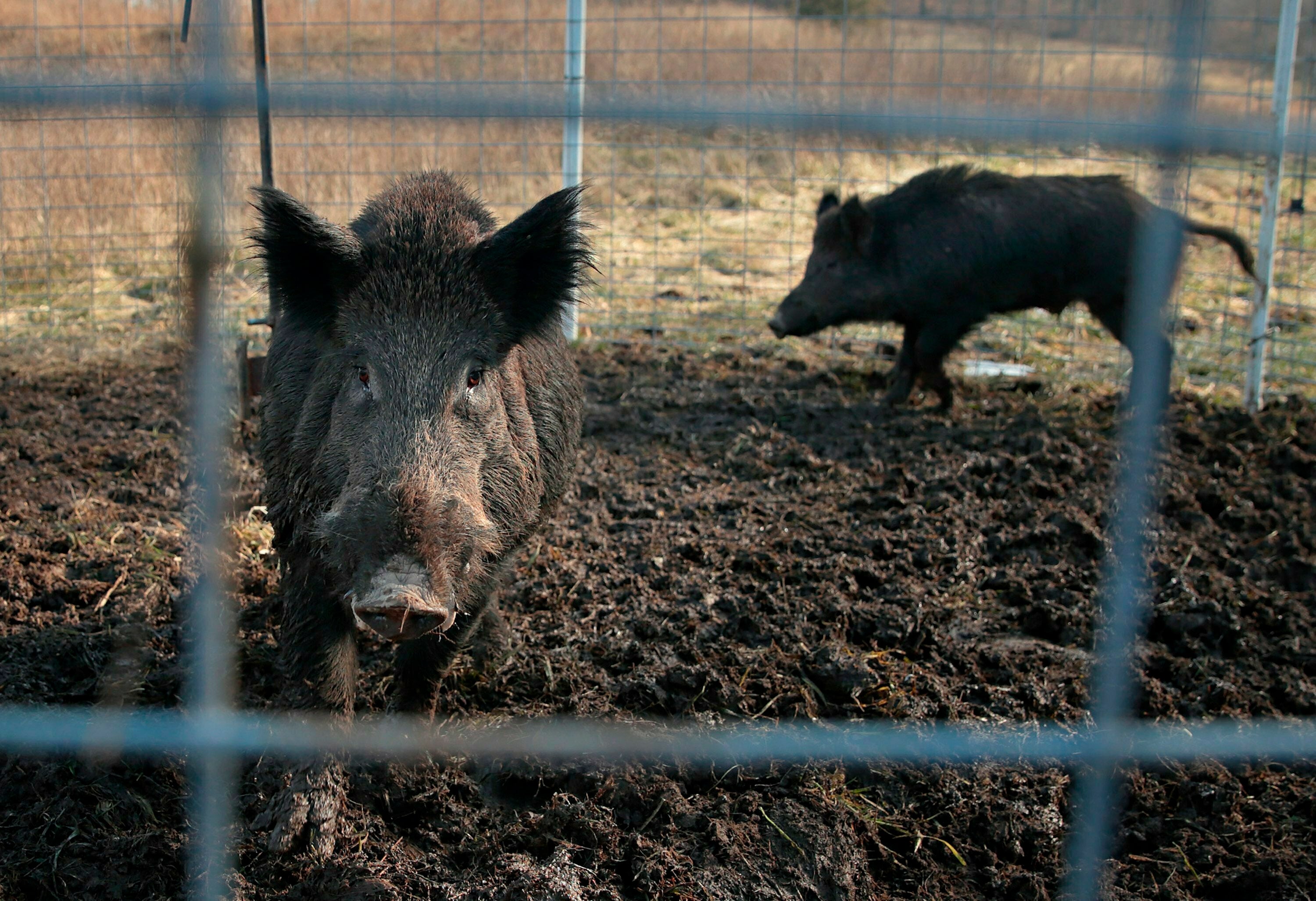Canadian ‘super pigs’ threaten to invade the US
The hybrid ‘super pigs’ have been deemed “ecological train wrecks” and threaten the survival of agriculture and livestock
A mass of Canadian ‘super pigs’ are threatening to breach the US border, but northern states are putting tactics in place to stop this wild hog invasion.
Super pigs have appeared in Alberta, Saskatchewan, and Manitoba in Canada after crossbreeding between different pig species created their super-swine form.
The pigs have been destroying crops and degrading water quality, but there is no stopping these feral hogs as they also can breed excessively and continue to multiply in their masses, according to the University of Saskatchewan.
“Wild pigs are ecological train wrecks. They are prolific breeders, making them an extremely successful invasive species,” said Ruth Aschim, a PhD student from the university who led research on the super pig species.
The researchers called the mutant wild pigs “the most prolific invasive mammal in Canada.”
The US already has a massive issue with feral hog populations, costing landowners billions each year in crop and land destruction, so northern states like Minnesota, North Dakota and Montana are taking action to stop the super pigs encroaching on US territory.
Ryan Brook, a professor at the University of Saskatchewan and expert on the growing super pig population, said that Montana has already banned raising and transporting wild pigs into the state.
However, if the country really wants to prevent the boars from crossing the border, he said more extreme measures need to be put in place.
“The only path forward is you have to be really aggressive, and you have to use all the tools in the toolbox,” Mr Brook said, according to AP.
This could entail using large ground traps, guns that fire nets from helicopters, tracking programs or even poisons like sodium nitrate, although scientists fear this could also harm other wildlife.
The director of Minnesota’s Wildlife Services, Gary Nohrenberg, said that as far as he knows, no wild pigs have made their way into the state.
In 2016, the USDA Wildlife Services shot and killed a group of feral pigs entering Minnesota, but not before they started to reproduce and destroy a wildlife preserve.
While the battle between the super pigs and the US authorities wages on, the diminishing of their population does not seem to be in the near future.

Research from the university said the pigs are a hybrid between wild boar and domestic swine, and have adopted helpful qualities from both to create a successful survivor of harsh Canadian winters.
Weighing between 120 and 250 stone, the super pigs live in ‘pigloos’ burrowed in the snow and can withstand very cold temperatures, even breeding in harsh conditions.
Mr Brook said to AP that his research team documented 62,000 sightings in Canada and explained that even if 65% of the wild pig population is killed each year, their numbers would still increase due to their super breeding.
The rapid rise in their population is due to the pigs becoming sexually mature as early as four to eight months old, having around six piglets per litter, with the whole family surviving off most farmer crops and insects, birds, reptiles and small mammals.
The invasive population poses a risk most significantly to the survival of agriculture and livestock, the effects of which have already been felt in Canada.
Canadian farmers have already reported their destructive behaviour by frightening their livestock, destroying crops, using their long snouts to root up soil, and tearing up the ground.
According to the USDA, 9 million wild pigs already inhabit the country and have severely impacted landowners, and more lethal methods of eradication are used to diminish the population.
In 2021, 9,857 feral hogs were killed by the Missouri Feral Hog Elimination Partnership, with 54,000 hogs killed in the state since 2016.
However, it is not just the conservation of land that the potential new influx of super pigs threatens. In 2019, a woman in Texas was killed by a group of feral hogs after being attacked while on her way to work.
The US hopes to eradicate the feral hog population and prevent any super pigs from invading their land, but the road to full eradication may be a long way off due to their ability to multiply rapidly.
Join our commenting forum
Join thought-provoking conversations, follow other Independent readers and see their replies
Comments
Bookmark popover
Removed from bookmarks